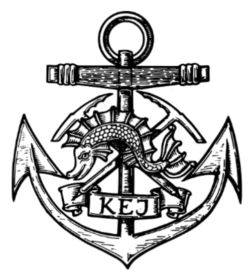A few weeks ago I was invited to a blogging event. I couldn’t say no, partly because the event was hugely exciting and outdoorsy, but also because it was in Greenwich.
Maritime Greenwich is a UNESCO World Heritage Site, and quite rightly so.
It’s also stunningly beautiful.

The main centrepiece is the Old Royal Naval College. Designed by Sir Christopher Wren of St Paul’s Cathedral fame, the buildings were built between 1696 and 1712, and became the Royal Hospital for Seamen.
Queen Mary II was inspired by the sight of wounded sailors returning from the Battle of La Hogue and this became a permanent home for retired Royal Navy sailors, so not a hospital in the sense we know it, in fact very similar to that of the Royal Hospital, Chelsea.

A Royal Hospital School opened in 1812 which provided education and a home to the orphans of seafarers in the Royal and Merchant Navy. In 1933 it moved to Suffolk and the old school buildings were reopened in 1934 as the National Maritime Museum, as it remains today.
The Royal Hospital for Seamen closed in 1869 and from 1873 to 1998 became the home of the Royal Naval College, responsible for officer training.
After 1998 this was moved to Britannia Royal Naval College, in Dartmouth.
The Painted Hall

More recently, it’s been used in a number of films including Pirates of the Caribbean: On Stranger Tides. I headed in to see the Painted Hall, as I’d not had the opportunity before, and saw that due to conservation work it’s covered in scaffolding. Fortunately, there is always a positive and at the moment you have the opportunity to climb 60ft up this scaffolding and see the painted ceiling up close whilst it’s being renovated. I had to…
The National Maritime Museum
Formerly the Royal Hospital School, now the National Maritime Museum, Greenwich. The world’s largest maritime museum, it houses everything from Turner’s famous painting of Trafalgar, to a cannonball lodged in HMS Victory after the battle.
Of course, me being me headed straight for the Nelson, Navy, Nation exhibit…


 Of course, at Greenwich you also have the Queen’s House, the Cutty Sark and also the famous Royal Observatory too, so it’s worth making a day of it.
Of course, at Greenwich you also have the Queen’s House, the Cutty Sark and also the famous Royal Observatory too, so it’s worth making a day of it.
I took the Thames Clipper from Embankment as I’m not a fan of the tube, and can 100% recommend this as a way of getting to Greenwich as you get to see so much of the city en route.
To find out more about Maritime Greenwich click on the below links.
Old Royal Naval College
National Maritime Museum
Royal Observatory
Queen’s House
The Cutty Sark






